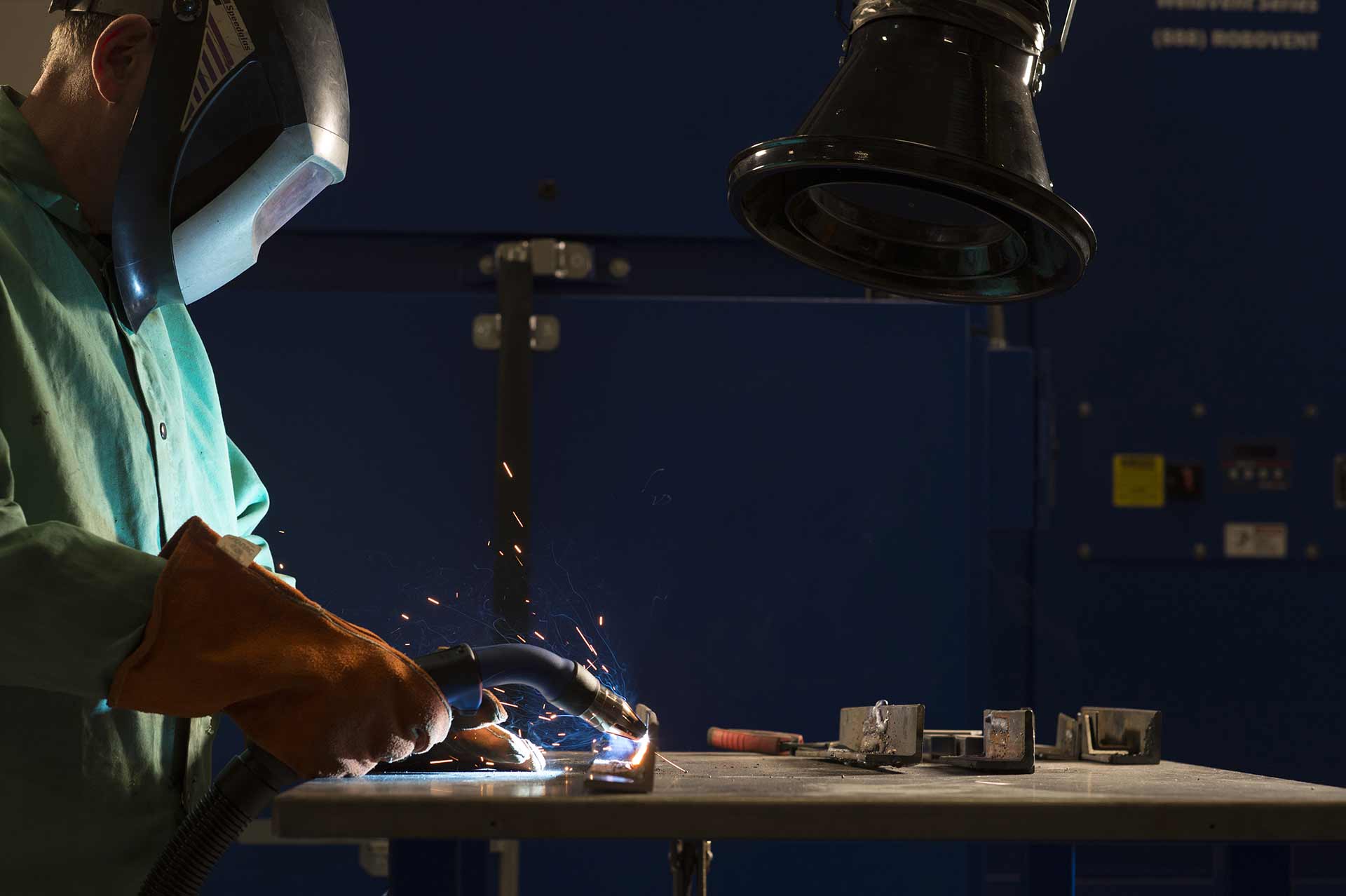A Brief History of Fume Guns, and Why Today Is Different
March 10, 2017
Here is the one-sentence history of fume guns: At first they were terrible, but now they’re pretty great. For decades, fume guns had a bad reputation, and it was well earned. Fortunately, engineers were not content to let the underdeveloped technology fade away.
The 1970s: Malaise Strikes
By the 1970s, extraction fume guns were widely deployed—and fairly deplored—across many industries. While many shops gave them a chance, the guns did not catch on. Their list of drawbacks proved to be a burden that was hard to shake. Fume guns were made of metal and were very heavy. Bulky shapes gave welders trouble, and trailing hoses were a constant tripping hazard. Welding in tight spaces—supposedly one of the greatest benefits of a fume gun—was never as easy as advertised.
For many years, fume guns also often failed one of their key requirements: delivering a quality weld. Often, shielding gases would be sucked away by the extraction hose, affecting action at the arc. If these gases were pulled away, the weld quality would suffer—often resulting in porosity of the weld. All of these shortcomings contributed to fume guns’ bad reputation. Many guns ended up collecting dust on shelves.
Today: New Technology, New Product
Radical improvements have reshaped modern fume guns. First, engineers have employed new high-strength plastics to make fume guns lightweight. Today’s fume guns often weigh less than a standard 400-amp air-cooled MIG gun. The slim design and light weight mean welders can work with comfort and relative ease, meaning repetitive stress injuries, like carpal tunnel syndrome, are less likely.
Today’s fume guns are more durable, as well, because they can be made with fewer moving parts. Welders can rest assured that the device won’t break and will be a reliable tool in the shop.
Certain fume guns on the market have benefited from major design leaps. RoboVent’s Extractor fume gun, for example, features a new nozzle design that combines a perfect weld with a high capture rate of weld fumes. Older fume guns would generate turbulence—unintentional, of course—at the nozzle, disturbing the shielding gasses and hurting the weld quality. The Extractor’s novel nozzle creates a vortex at the tip that leaves shielding gasses untouched. Depending on the angle at which the gun is held, this results in a minimum collection of 90% of weld fumes. That is stunning performance from a technology that had such a bad reputation just ten or twenty years ago.
With such intense new pressures to control weld fumes in the workplace, employers are looking at every possible solution. Extraction fume guns are a great option for source capture of weld fumes—the ability to remove fumes literally at the point of creation. Especially in environments with the most toxic fumes—say, hexavalent chromium, a known carcinogen and heavily regulated substance by OSHA—a fume gun can protect a welder and ensure regulatory compliance for an employer. Fortunately for both welders and employers, today’s fume guns are far better than before.
